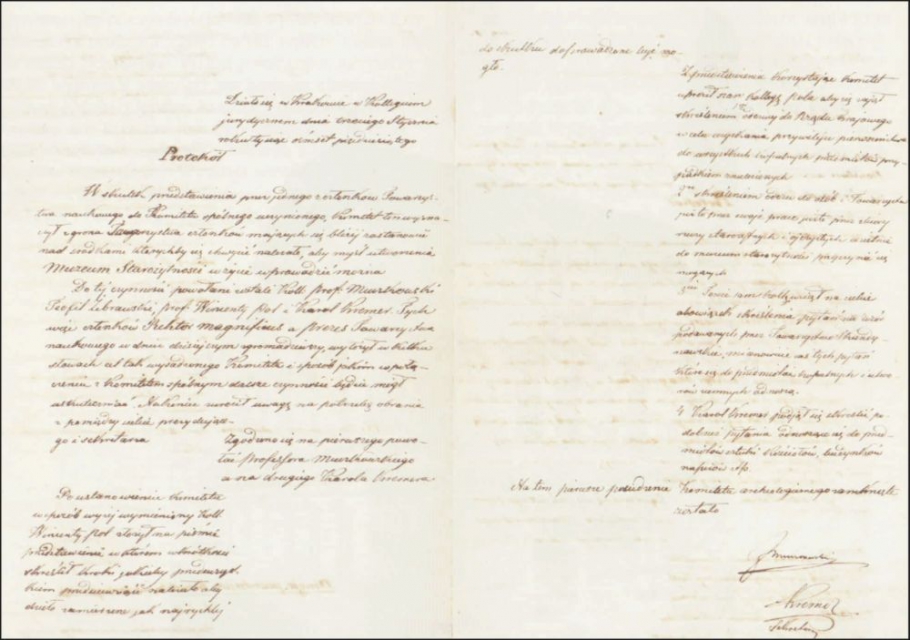The Archaeological Museum in Kraków is the oldest archaeological museum in Poland. It was created as the Museum of Antiquities under the initiative of intellectuals from Kraków gathered in the Kraków Scientific Society (henceforth: KSS). The deed of appointment of the museum was written on 18th February 1850, designating the members of the founding committee which included: Józef Muczkowski – the director of the Jagiellonian Library (chairperson of the committee), Karol Kremer – the director of building the Republic of Kraków (secretary), Wincenty Pol – a poet and a professor of the first Polish chair of geography at the Jagiellonian University, and Teofil Żebrawski – an architect, an inspector of land and water transport systems. For the purposes of the created institution, documents were prepared for the national authorities in which the project of the “priority right to all excavated objects found by chance” was presented. In 1857, the first Antiquity Exhibition was organised in Kraków (in the Lubomirski Palace at 17 św. Jana street), during which the “relics of the past” donated by Polish people were presented, among them the statue of “Światowid” discovered in Zbruch, which has become the symbol of the museum.
For several decades, the museum operated as a branch of: the KSS, the Academy of Arts and Sciences (henceforth: AU), the Polish Academy of Arts and Sciences (henceforth: PAU) and the Polish Academy of Sciences (henceforth: PAN).
In 1891, the Archaeological Museum became an independent specialist institution of the AL. In 1955, the museum became an independent unit under the Ministry of Culture and the Arts. In 1958, it was subordinated to the National Council of the city of Kraków, and in 1990-1998 to the Voivode of Kraków. In 1999, the Museum became a self-governing institution, currently subordinate to the Marshal Office of the Małopolska Region.

The history of the Nowa Huta Branch of the Archaeological Museum in Kraków dates back to 1949, when the first archaeologists appeared on the construction sites of the “new city” and the metallurgical conglomerate plant. Large amounts of archaeological materials discovered by them were an argument confirming the constant supervision over the investments. In 1950, a facility supervising the excavations in Nowa Huta called “Kierownictwo Prac Wykopaliskowych w Nowej Hucie” was established. In 1955, it became a Branch of the Archaeological Museum in Kraków. Since then, decades of field work have been providing impressive archaeological materials – partially already analysed, published (for instance, in the academic journal “Materiały Archeologiczne Nowej Huty” [“Materials from Archaeological Investigations at Nowa Huta”]) and made available during exhibitions, lectures and in the press.